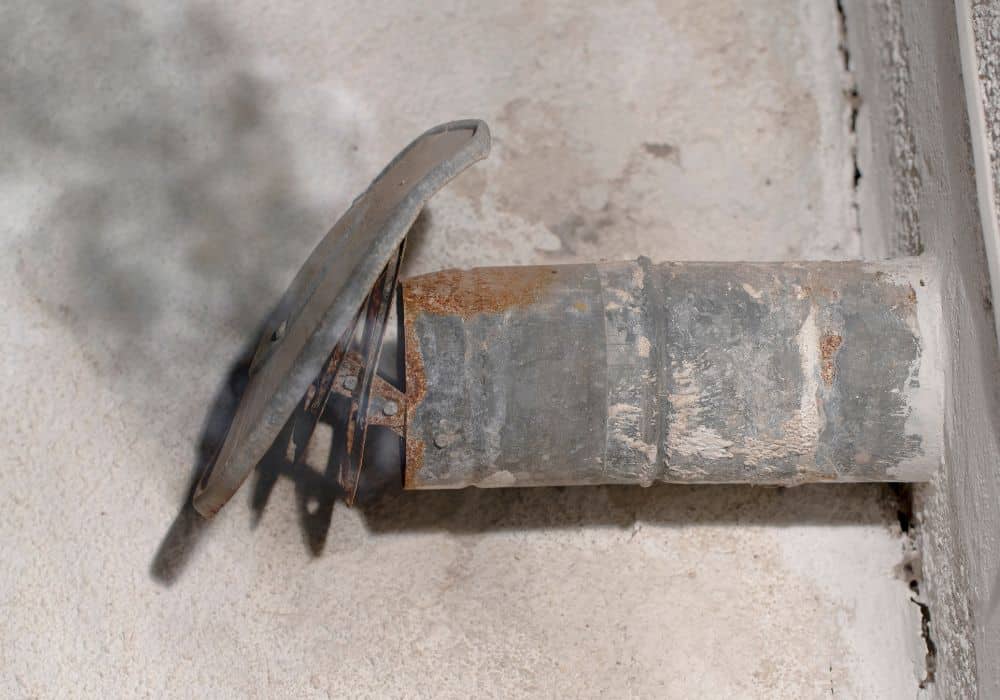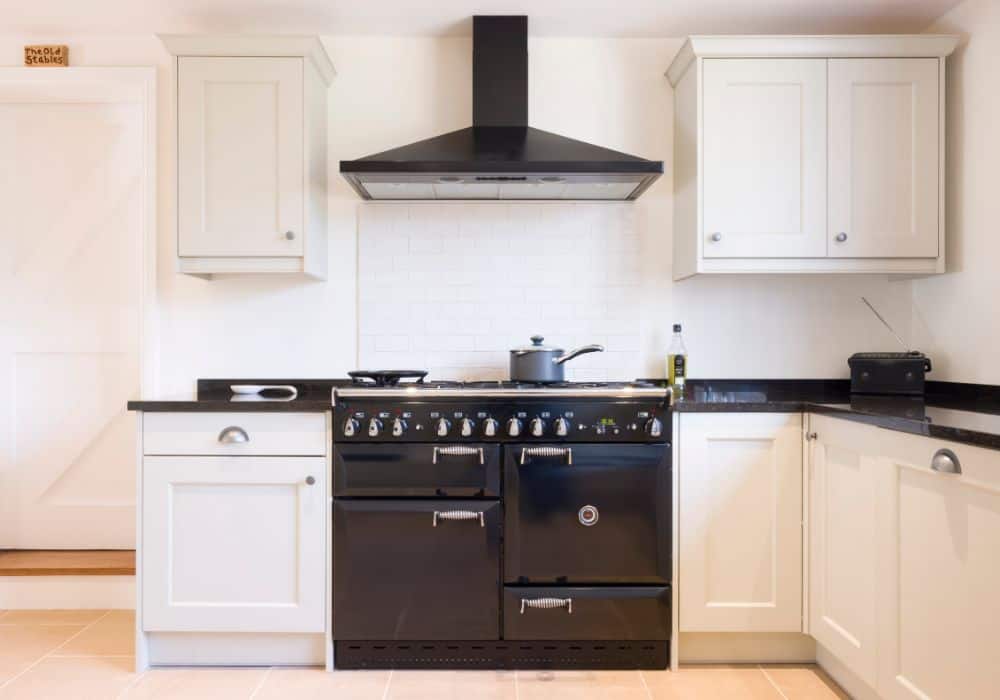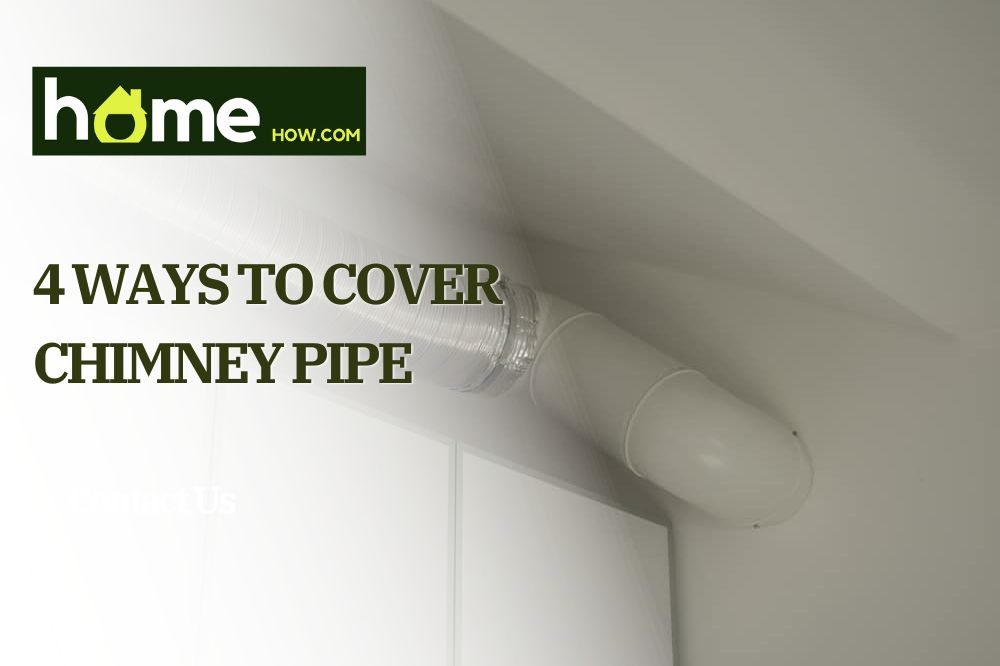If you have a kitchen chimney, you will appreciate its benefit almost every time you cook. However, if you want this part of your kitchen to stay neat, you might as well want to cover it.
But, the question is, what is the proper way of covering your kitchen chimney?
The Uses of Kitchen Pipes
Also known as a flue pipe, this part of your kitchen area refers to a tube or cylinder used to vent wood stoves and other appliances that use wood, coal, oil, and occasionally gas as fuel.
In simple words, they are used to carry smoke and combustion outside your house and provide proper home ventilation.
Wood burners, freestanding fireplaces, boilers, and water heaters are some of the home appliances that employ them. Some appliance types will only work with a certain form of chimney pipe, but other types can use a range of various types for the same function.
Generally, the metal construction of the chimney’s cylindrical tubes makes them suitable for use with a wide range of appliance types and manufacturers.

Additionally, the pipe can be manufactured from a wide range of metals, each of which can insulate it to varying degrees.
Depending on how long the pipe must be, whether it must twist or turn, or whether it must be erected around existing buildings, additional components may be required to connect it.
Best Ways to Cover Chimney Pipes
You might want to cover your chimney pipes to keep them neat and away from debris. But, take note that there is a proper way of covering it, and it is not just simply putting on cloth.
1. Consider a kitchen cabinet
One of the best ways to cover a chimney pipe is by installing a cabinet. Personally, I find this technique most effective because you get to choose your own cabinet style and design.
Aside from its attractiveness, you will also have the chance to use it as your storage area for some appliances that you rarely or no longer use.
When installing a kitchen cabinet, you have to first use a measuring tape to get the diameter of the area where you will put it against your kitchen wall. Make sure that the dimensions are correct and that they are on a level with your other kitchen cabinets, laminates, and countertops.
Additionally, you’ll want to make sure that the cabinets you buy are the appropriate size. Consider the number of doors you’ll need on each and the appropriate door size for each cabinet space. Determine the number of shelves or drawers that each cabinet needs.
Take note that the effectiveness of this method is greatly influenced by the size and placement of your exposed chimney exhaust pipe. Some kitchen design stores provide premade, backless cabinets that can be used to conceal kitchen vent pipes, but we recommend building your own.
2. Columns and soffits will do
If you want to do a less invasive method of covering your kitchen chimney pipe, you might also want to consider columns and soffits.
Generally, columns and soffits work by covering the space between your ceiling and the top of your wall.
You may put a column over the pipes to effectively conceal them. After covering the pipe, you can paint it to coordinate with the design of the rest of your kitchen area.
You can purchase a prefabricated column or soffit to conceal the pipe from a local kitchen store at an affordable cost.
For proper installation, it is highly recommended to seek help from experienced people to avoid damaging the other parts of your kitchen area.
3. Paint your pipe
You might want to do some paintings in your pipe as well. If you are creative enough, you can design the pipe on your own while considering the aesthetic of your overall kitchen area.
However, you have to choose the right paint type for your pipe. Remember, heat is being passed through your pipe.
So, you should at least go for a paint that is heat-resistant. If you can ask a pain professional, you can try inquiring about these anti-corrosive paints.
4. Your home decors may work as well
If you do not have any other option, using your home decors and accessories for covering your chimney pipes will work as well.
While beautifying your kitchen area, you have to remember not to put decors that can be explosive.
Other Tips for Those Who Want Chimney Covers

Before installing your chimney pipes, there are some tips that you can consider so that you will not have a hard time thinking about how to cover your chimney pipes.
1. Place your pipe behind the chimney
This is a simple method of covering your pipe and in this phase, the pipe is inserted into the hole that was made in the wall almost behind the chimney.
This action is really helpful especially if you have less space in your kitchen area to conceal the chimney.
Take note that whenever you drill holes, you should be applying a sealant afterward. This step will prevent pests and insects such as cockroaches from nesting in the holes.
2. Reveal your chimney
Well, sometimes, you do not really have to conceal your chimney. Let it be and do not stress yourself about how to cover it.
It doesn’t really matter as long as your kitchen area is neat and pleasing to the eyes. Instead of finding ways to cover it, you can just leave it simple or paint it following the color of your wall.
3. Install a loft cabinet
This technique is similar to the kitchen cabinet. The only difference is that, in this method, you will have to attach extra furniture above your chimney that can fit your pipe.
Final Thoughts
Chimneys are wonderful home appliances. Aside from them being essential in providing proper air ventilation, they also add beauty to your kitchen area.
However, there are times when homeowners want to cover them and just hide their beauty. If you are one of these, there are some techniques that you can consider without having to repair your overall kitchen room.
